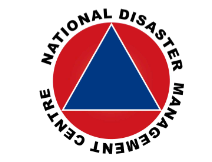Original Research
Intrinsic vulnerability assessment of shallow aquifers of the sedimentary basin of southwestern Nigeria
Jàmbá: Journal of Disaster Risk Studies | Vol 10, No 1 | a333 |
DOI: https://doi.org/10.4102/jamba.v10i1.333
| © 2018 Saheed A. Oke, Danie Vermeulen, Modreck Gomo
| This work is licensed under CC Attribution 4.0
Submitted: 14 May 2016 | Published: 29 March 2018
Submitted: 14 May 2016 | Published: 29 March 2018
About the author(s)
Saheed A. Oke, Department of Civil Engineering, Central University of Technology, South AfricaDanie Vermeulen, Institute for Groundwater Studies, University of Free State, South Africa
Modreck Gomo, Institute for Groundwater Studies, University of Free State, South Africa
Abstract
The shallow groundwater of the multi-layered sedimentary basin aquifer of southwestern Nigeria was assessed based on its intrinsic vulnerability property. The vulnerability evaluation involves determining the protective cover and infiltration condition of the unsaturated zone in the basin. This was achieved using the PI (P stands for protective cover effectiveness of the overlying lithology and I indicates the degree of infiltration bypass) vulnerability method of the European vulnerability approach. The PI method specifically measures the protection cover and the degree to which the protective cover is bypassed. Intrinsic parameters assessed were the subsoil, lithology, topsoil, recharge and fracturing for the protective cover. The saturated hydraulic conductivity of topsoil, infiltration processes and the lateral surface and subsurface flow were evaluated for the infiltration bypassed. The results show moderate to very low vulnerability areas. Low vulnerability areas were characterised by lithology with massive sandstone and limestone, subsoils of sandy loam texture, high slopes and high depth to water table. The moderate vulnerability areas were characterised by high rainfall and high recharge, low water table, unconsolidated sandstones and alluvium lithology. The intrinsic vulnerability properties shown in vulnerability maps will be a useful tool in planning and monitoring land use activities that can be of impact in groundwater pollution.
Keywords
Nigeria; intrinsic vulnerability; PI method; shallow aquifer; groundwater
Metrics
Total abstract views: 3317Total article views: 3305
Crossref Citations
1. Geo-electrostratigraphic assessment of aquifer potential, protectivity, and pliable level of vulnerability within a coastal milieu
Ndifreke I. Udosen, Aniekan M. Ekanem, Nyakno J. George, Jewel E. Thomas
Water Practice & Technology vol: 19 issue: 5 first page: 2010 year: 2024
doi: 10.2166/wpt.2024.125

